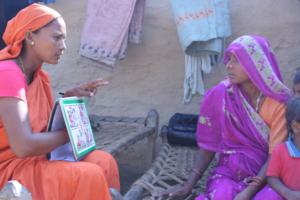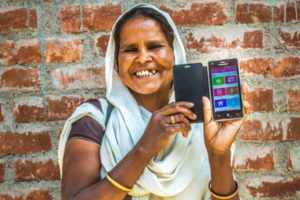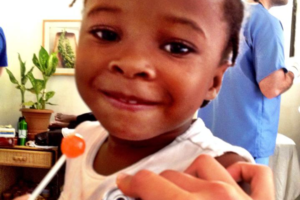Integrating SBCC into Service Delivery Programs
Learn how to design and integrate social and behavior change communication (SBCC) into all stages of the service delivery process.
Enhance service delivery and ultimately improve health outcomes by using SBCC before, during and after the clinical encounter.
What Is Service Communication?
Service communication is the use of Social and Behavior Change Communication (SBCC) processes and techniques to motivate health service-related behaviors among intended audiences across the continuum of care – Before, During and After services. By integrating SBCC into your service delivery projects, you can get more clients to health facilities, improve client-provider interactions, and increase the adoption and maintenance of healthy behaviors.
Purpose of This I-Kit
This I-Kit aims to help service delivery project managers effectively use service communication to enhance the impact of their project. This I-Kit can be used to help increase demand for and uptake of services, and improve consistent long-term maintenance of healthy behaviors. It is designed to help users understand key service communication concepts, apply SBCC techniques to create successful communication activities, and learn how to better coordinate efforts with SBCC projects.
Who Is the Audience for This I-Kit?
The intended users of this I-Kit are project designers and project managers tasked with improving service delivery by better integrating SBCC into services, either through direct implementation or through coordination with an SBCC partner. Staff of organizations or entities that provide clinical health services will also benefit from an understanding of the content of this I-Kit. Ideally, users will have some understanding of SBCC theory and processes and a desire to better apply these concepts to their service delivery efforts.
What Does This I-Kit Contain?
|
|
|
|
|
How To Use This I-Kit
You can use this I-Kit to help you integrate social and behavior change communication (SBCC) into all stages of the service delivery process – either through more effective coordination with SBCC projects or by designing your own communication activities. Log in here to receive a certificate for completing the I-Kit. Or, simply proceed through the I-Kit.
- Start by learning about Service Communication. Discover what service communication is and how it can be used through the three stages of service delivery. Explore the evidence for service communication.
- Next, learn how to design your own communication activities using the Step-by-Step Guidance on Designing SBCC for Health Services.
- Then, learn how to more effectively coordinate efforts with SBCC partners to jointly achieve positive health outcomes in the Operational Considerations section.
- Last, learn from others’ experience by studying the five Case Studies that illustrate how projects have successfully applied service communication principles.
This I-Kit is organized into four sections:
Learn
An overview of the I-Kit’s content, purpose and rationale and a summary of the evidence for SBCC in services.
Designing SBCC for Health Services
Key principles and step-by-step guidance on successfully designing communication activities for health services.
Operational Considerations
Tips and guidelines on how service delivery and SBCC partners can effectively work together in a variety of implementation scenarios.
Case Studies
Five illustrative case studies describing how key SBCC principles have been successfully applied to service delivery programs.


 Background Information
Background Information Step-by-Step Design Guidance
Step-by-Step Design Guidance Coordination Guidance
Coordination Guidance Worksheets and Resources
Worksheets and Resources Case Studies
Case Studies